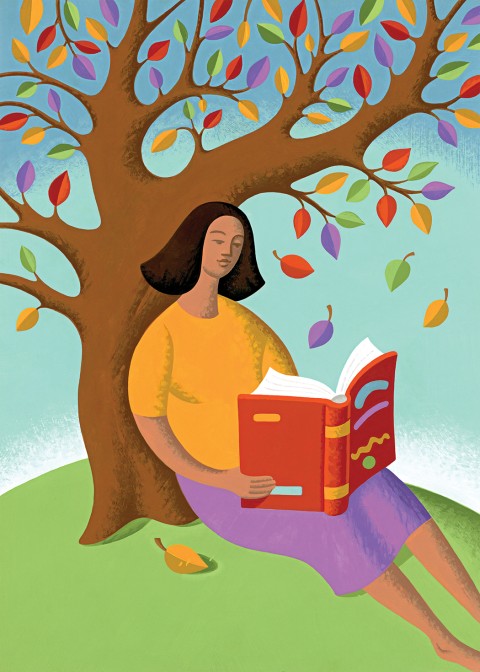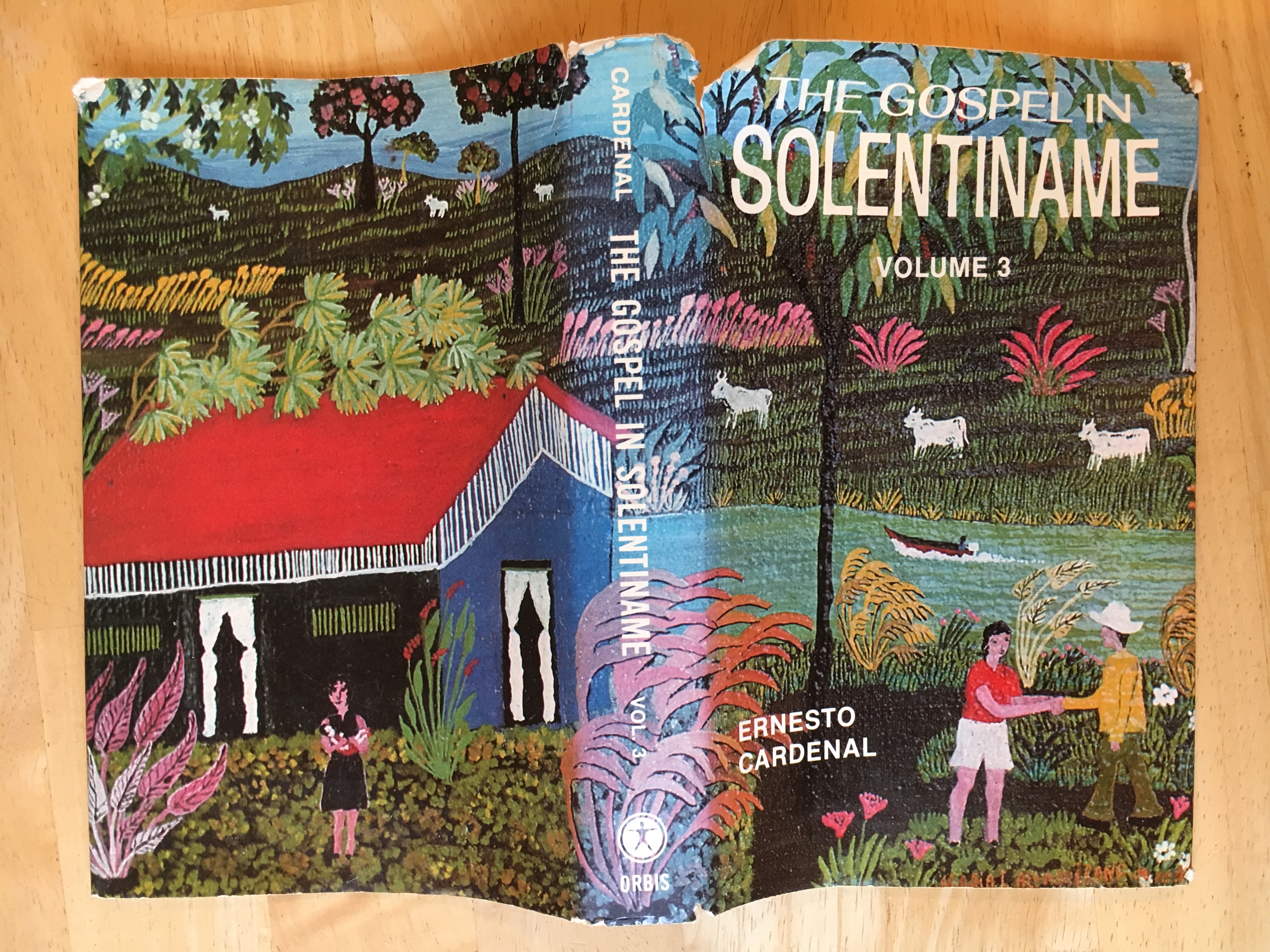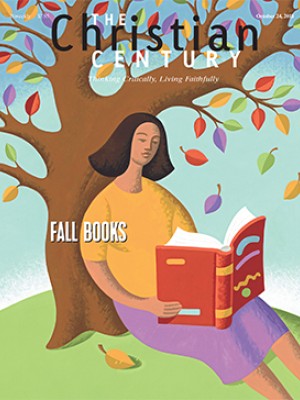
We asked: “What book would you describe as beautiful?”
Barbara Brown Taylor: Henri Nouwen required Florida Scott-Maxwell’s The Measure of My Days for his course on aging at Yale Divinity School in the 1970s. I was in my twenties. The book was in its fifth printing, written by an octogenarian who had been an actor, a playwright, a mother, a suffragette, and a Jungian analyst before settling down to write a memoir about being old. “Age puzzles me,” she wrote. “I thought it was a quiet time. My seventies were interesting, and fairly serene, but my eighties are passionate. I grow more intense as I age. To my own surprise I burst out with hot conviction.”
For that reason, she continued, it had become necessary for her to pretend more tranquility than she felt. Her family needed her to be brave and content so they did not have to worry about her. “The old must often try to be silent, if it is within their power,” she wrote, “since silence may be like space, the intensely alive something that contains all.”
Read our latest issue or browse back issues.
This was shocking to me. My fieldwork involved visiting old people at a local nursing home, many of whom sat silently in their wheelchairs staring into space. How many of them were faking it, I wondered? How much passion and hot conviction were they hiding to spare me grief? Scott-Maxwell upset my certainty about aging. Forty years later she is still upsetting it, giving me all the permission I need to age ferociously.
This book is beautiful on at least three levels. It is beautiful in the hand, a 1973 Borzoi edition with creamy deckle-edged pages. It is beautiful in the ear, with prose that reads more like poetry. It is beautiful in its humanity, doing what the best books do: convincing us there is more to everything than we first imagined.
Barbara Brown Taylor’s forthcoming book is Holy Envy: Finding God in the Faith of Others.
Parker J. Palmer: Between 1960 and 2006, Wendell Berry published eight novels about a fictional community called Port William, Kentucky—a fiction rooted in a very real place called Port Royal near the Kentucky River, where the Berry family has farmed for several generations. Each Port William novel is a thing of beauty, but Hannah Coulter (2004) is one of my favorites. Hannah’s beauty runs deeper and wider than anything a beauty pageant has ever seen. It’s the beauty of “an old woman twice widowed, who has experienced much loss yet has never been defeated.”
As one commentator said, “Somehow, lying at the center of [Hannah’s] strength is the [Port William] ‘membership’—the fact that people care for each other and, even in absence, hold each other in a kind of presence.” A civic community as a membership of mutual care—that’s beautiful, too.
Now I pause to sigh, even cry, over the condition of civil society in the United States. The crude, abusive, deceptive, manipulative, wealth-obsessed, egomaniacal, racist, sexist, xenophobic, and fear-driven politics we are suffering from can be summed up with ease: it’s plug-ugly. As the apostle Paul reminds us, we are members of one another—a membership, if you will—and we’d do well to work hard to reclaim the well-being of our body politic before it becomes too ugly to be redeemed.
At an event I attended, the great poet Mary Oliver was asked, “What is the purpose of beauty in the world?” She responded, “We need beauty because it makes us ache to be worthy of it.” If you’re aching over the ugliness and unworthiness of the current American situation, take hope in the beauty of the Hannah Coulters of our world—who have lost so much and yet never been defeated—and of everyone who has a sense of civic membership with both friends and strangers. Then go thou and be beautiful in your own way.
Parker J. Palmer is author of On the Brink of Everything: Grace, Gravity, and Getting Old.
B. D. McClay: A man in his early twenties meets by chance a girl of 12 who is not remarkable in any way. He is immediately, irrevocably smitten. They become engaged, but the girl dies before they can marry. The man avoids her deathbed, not having the stomach for it. He will be engaged again soon, though he writes to one friend that he “would rather be dead.” Luckily, he will get his wish and die at 28.
So runs Penelope Fitzgerald’s The Blue Flower, a historical novel about the courtship of the German romantic poet Novalis (known here as “Fritz”) and Sophie von Kühn. The book would stand out for its style—somehow intimate and warm and detached—but it’s the complete sincerity with which it depicts Fritz’s love that really sets it apart—a sincerity that is compatible with recognizing that Sophie is not a remarkable person and that Fritz fails her.
The quality people have to surprise us—to change who we are by virtue of being who they are—is something Fitzgerald delicately plays with throughout the book. People open up the world for each other, and sometimes what enables them to do this is not apparent to anyone involved. The mystery is that Sophie reveals something quite real to Fritz even though she is an utterly normal girl, but whatever it is, he can’t live up to it to care for her. And it’s this—the tremendous power of love and yet its insufficiency, the degree to which we can’t ever know what we mean to one another, the amount of unreciprocated light we shed for and on one another—that makes the book so beautiful.
“I long to see the blue flower. It lies incessantly at my heart,” says a character in a story Fritz begins writing but never finishes, in part because he can’t figure out what the flower means. The blue flower may be love. It may be reality. Fitzgerald suggests that there is no difference in these answers.
B. D. McClay is senior editor of The Hedgehog Review.
Isaac S. Villegas: The dust jacket is a painting of verdant life: cows wander through fields, and banana and palm trees tower over tobacco plants. A blue expanse splashes across the book—depicting either the immense sky or Lake Nicaragua, the body of water surrounding the Solentiname archipelago. The pages inside teem with conversations about Jesus—the people of the community gathering around the Bible to discern its meaning for their common life, their world ablaze with news of land reform and political revolution. Their priest, Ernesto Cardenal, convened the dialogues from 1971 to 1976 and edited the transcripts.
When I saw volume 3 of The Gospel in Solentiname, the luscious cover caught my gaze. The pages overflow with insights into God’s abundant life amid oppression. After working through John 10—where Jesus is the good shepherd—one person concludes that “to live in unity we have to live in equality.” Another woman remarks, “the wolf seizes the sheep and scatters them: because exploitation divides people into classes.” This system of class division and capitalist exploitation, she continues, “prevents humankind from living in communion.”
In these dialogues, held at church after mass, discussions stretch through lunch and beyond. Scriptural interpretation and shared food are God’s lavish provision, the communal life a foretaste of Christ’s eschatological banquet. The beauty of God is the liberation of humankind, creation fully alive.

The cover image of the edition I have is by Maria Luisa Altamirano, a member of the community. By 1977, warfare will ravage the community and the national guard will set fire to Solentiname. But in Altamirano’s art we glimpse a community’s prophecy of a new heaven and a new earth. “The Revolution is a lake where there are fish for everyone,” writes Juan Agudelo in one of his Solentiname workshop poems, “The Revolution is a sacuanjoche blossom.” In the painting, on the back cover, a woman cradles a child in her arms. Next to her grows a sacuanjoche plant, soon to bloom. The buds promise hope.
Isaac S. Villegas is pastor of Chapel Hill Mennonite Fellowship in Chapel Hill, North Carolina.
Nanette Sawyer: Gayle Boss’s All Creation Waits: The Advent Mystery of New Beginnings is a book of doorways through which light shines into the physical beauty, mystery, and majesty of God’s exuberant creation. Each of the short reflections on a creature is prose poetry and a metaphor for the many ways we—like the other animals of God’s creation—can survive the wintry seasons of scarcity, hunger, grief, and loss. Learning from these creatures, we meditate on our dance with death and our hope for new life, for springtime, for salvation.
This heart-opening collection contains miracle after miracle. It is amazing that the painted turtle burrows into the mud and stops breathing and that the calcium of her bones and shell begin to seep into her blood to neutralize the buildup of lactic acid. “So,” Boss writes, “though she is dissolving, every stressed particle of her stays focused on the silver bead of utter quietude.” How might we find that silver bead of utter quietude in our own lives?
The cottontail rabbit, who blends in with the ground cover of summer, becomes exposed on snow-covered ground. Her “lightning-bolt dash” saves her in winter. “Utterly still, she is utterly alert. In her stillness is her leap.” Her stillness is pure bundled potential. Of the loons, who are colorful in the summer but go gray in the winter, the author asks, “Do they remember who they were a season ago or imagine who they might be in the next?” We could ask ourselves the same thing.
The honeybees survive the winter because they “shiver together.” The cardinal’s “scarlet flame” color “shouts his unshakeable expectation of spring.” How could we embody such togetherness, such expectation?
The beauty of this Advent journey is in the abundance of life it shows, the poetry of color, form, metaphor, and connection. Reflecting on this beauty, perhaps we can meet at the manger, where “the One Great Love” also waits for us.
Nanette Sawyer is a pastor and author of Hospitality—The Sacred Art.
Brian Volck: It seemed unpromising at first: a chunky Victorian novel set in a Midlands town just before passage of the 1832 Reform Act, authored by a religious skeptic whose intellectual touchstones were Ludwig Feuerbach, Baruch Spinoza, and David Strauss. Yet I, who prefer novels modestly sized, tidy, and open—however tentatively—to the possibility of the numinous, consider George Eliot’s Middlemarch the wisest work of prose fiction I know. Like life, Eliot’s narrative juxtaposes comedy and idealism with melancholy and resignation. Endearingly awkward courtships lead to disastrous marriages. The two central characters—Dorothea Brooke, drawn to great works of social transformation, and Tertius Lydgate, eager to reform medical practice—continually frustrate their own ambitions. What one person understood of another’s motivations and desires suddenly proves overly idealistic or tragically wrong. All are wounded. Most bear their scars as best they can.
A masterful ironist at odds with the conventions of Victorian Britain, George Eliot (whose real name was Mary Anne Evans) might have written a contemptuous satire of provincial life, but compassion for her characters precluded that. One notable example is Nicholas Bulstrode, the wealthy banker and outwardly pious Methodist desperate to hide a dark past. Bulstrode is a hypocrite ready to condemn those who stray from a morality he cannot follow himself, rather like the nominal Christians who condemned Eliot for her “irregular marriages.” Yet Bulstrode is never reduced to caricature. His motives are complex, his actions yield both good and evil, and when his secret is exposed, Eliot doesn’t revel in his downfall.
It’s Eliot’s generosity and compassion, her refusal to demonize her disparagers, that makes Middlemarch so wise and so beautiful. Like all works of true beauty, it merits revisiting. In today’s diseased social discourse, where simplistic moral debates readily devolve into mutual condemnation, Eliot’s generous vision is urgently needed medicine.
Brian Volck is author of Attending Others: A Doctor’s Education in Bodies and Words.
Amy Ziettlow: I first read Tikva Frymer-Kensky’s Motherprayer: The Pregnant Woman’s Spiritual Companion in divinity school. I often felt I was drowning in the headiness of the University of Chicago, so Motherprayer’s invitation to imagine the fears, anxieties, and joys of the nine months of pregnancy was a beautiful, contrasting balm of embodiment and ritual.
You who could see the child in my depths,
I who felt the kicks and the turns,
Together we counted the months.
Together we planned the future.
Flesh of my flesh,
Form of Your form.
Another human being upon the earth,
A home for God in this, our world.
Later, when I was pregnant for the first time, I immersed myself in the copious volumes of medical literature related to pregnancy. I then grasped how much I needed Frymer-Kensky’s translations of ancient texts and poetry to connect me spiritually to the child within and to the generations of mothers, genetic and in spirit, who have gone before me. I dug the book out with each succeeding pregnancy because her words encompassed my hopes for each child and fortified me to face the “long on-going process of individuation and separation” after birth.
Ultimately, as a mother and a pastor, I aim to echo Frymer-Kensky’s words of welcome to all children:
You come into a world of love
And a world of trouble and challenge
We are here to receive your gifts
And bestow ours upon you.We welcome you with shared blessing.
Welcome to the sacred task,
To the dance of a life with love,
The song of a life in joy.
Amy Ziettlow is a pastor and coauthor of Homeward Bound: Modern Families, Elder Care, and Loss.
Debra Dean Murphy: How do you make a book that anyone will read out of lives as quiet as these?” This question is posed by the narrator, a writer, in Wallace Stegner’s Crossing to Safety, but one could ask it about this beautiful book itself. Taking its title from a Robert Frost poem, “I Could Give All to Time,” the novel moves back and forth from the 1930s to the 1970s to tell the story of an enduring friendship between two couples. Charity and Sid Lang have old money, social connections, and elite eastern educations. Sally and Larry Morgan share modest western roots, exceptional literary talent, and a besetting illness.
The particulars of their story reveal what is universal about friendships and marriages that persist over time—all that is lovely and life-giving as well as that which disappoints and diminishes. In Larry’s narration of Charity’s generosity and need to control, Sally’s charisma and compromised health, and his own ambition and Sid’s lack of it, we recognize the failures, regrets, graces, and second chances in our own messy stories, even as we are grateful to journey with characters so fully rendered, so finely observed. Through their lives we see the people to whom we are inextricably linked. We are reminded how beautiful it is (and how much we long) to be deeply seen and known—both the best and the worst in us—and still cherished, desired, and forgiven.
Stegner is perhaps better known for his Pulitzer Prize–winning novel Angle of Repose, his acclaimed nonfiction about the American West, and his lifelong commitment to land, water, and the places we inhabit. Crossing to Safety is no less a book about attending with care to that which has been entrusted to us—the people who cross our paths and take up residence in our hearts.
Debra Dean Murphy is author of Happiness, Health, and Beauty: The Christian Life in Everyday Terms.
Carol Zaleski: With fresh news of corruption and abuse served up daily, any book that portrays true innocence—innocence tested, perhaps, but not ruined—seems beautiful. Any book that speaks in praise of innocence without denying the Fall, without sentimentality, without the romanticism that ends in ennui, is something to be treasured. Where is such a book to be found?
Well, someone did find it, and by the merest chance. In the winter of 1896, while browsing in an open-air London bookstall, a certain William T. Brooke happened upon two manuscript volumes, possible candidates for the scrap heap had he not purchased them on the spot. Years later the author was identified as the 17th-century cleric Thomas Traherne; and so we have the book known as Centuries of Meditations, a sequence of reflections extolling “those Pure and Virgin Apprehensions I had from the Womb, and that Divine Light wherewith I was born,” insisting that infant felicity is a possession not wholly lost in adulthood and calling us to a conscious, disciplined recovery of innocent delight.
With an orthography almost as enchanting as his Christian Platonism, Traherne seemed to tell me I had found the book I was looking for:
We lov we know not what: and therfore evry Thing allures us. As Iron at a Distance is drawn by the Loadstone, there being some Invisible Communications between them: So is there in us a World of Lov to somwhat, tho we know not what in the World that should be. There are Invisible Ways of Conveyance, by which some Great Thing doth touch our Souls, and by which we tend to it. Do you not feel yourself Drawn with the Expectation and Desire of som Great Thing?
Who could fail to be Drawn to so beautiful a Book?
Note: H. M. Margoliouth’s 1958 edition—which I have in my hand as I write—retains Traherne’s original spelling, capitalization, and punctuation. This is the best way to experience Traherne while we wait for the 14-volume critical edition of his complete works, scheduled to begin appearing in 2022 from Oxford University Press.
Carol Zaleski is coauthor of The Fellowship: The Literary Lives of the Inklings.
Charles Mathewes: It’s early morning in a subterranean coffee shop, during graduate school, and I am talking to a teacher I revere. He holds a book up, a Loeb Classical Library copy of Aristotle’s Metaphysics, in green cloth, with facing pages of Greek text and English translation. He says that in two thousand years, no technology has been so transformative, so wondrous, as the codex. It can contain the distilled wisdom of a life, and if it has lasted a century or more, the odds are reasonably good it is worth your while. It needs no batteries, no recharging, no further key; to access its worth, all you need have is light, and all you need do is open it and begin reading.
No lessons he taught me were more affecting than this. Ever since, the sheer physical wondrousness of books has been palpable for me. I especially love those as small as a Loeb, or as the volumes of the Clay Sanskrit Library, or as one of the old blue hardbound Oxford World’s Classics: the right size for a human palm, printed on very thin paper but luminously legible, even a century after they were made.
Walter Benjamin suggested that objects in an age of mechanical reproducibility lose their “aura,” any sense of the singularity of their being. None of the books I own are especially rare. But each is glorious, especially the older ones, professing their sheer, stubborn survival across centuries. The patina of wear has not ground them down so much as polished their skin. Their covers are a bit dulled, and the handwriting inside is often faded away, almost to a cirrusy vagueness. But their fundamental power remains, anchored in the density and durability of their presence. Benjamin missed this: reality is not just a matter of matter and space but of time as well, and the most mundane reproduction’s history can invest a copy with an individuality, an aura all its own.
Other things of our civilization will endure longer, like plastics; other things can contain more information, like the glass bricks of our phones. But little will be as worthy of survival as these. Small old books still seem to me among the most wonderful artifacts humanity has ever created, minor miraculous jewel boxes of civilization.
Charles Mathewes is author of The Republic of Grace: Augustinian Thoughts for Dark Times.
A version of this article, which was edited on October 9, appears in the print edition under the title “Beautiful books.”







